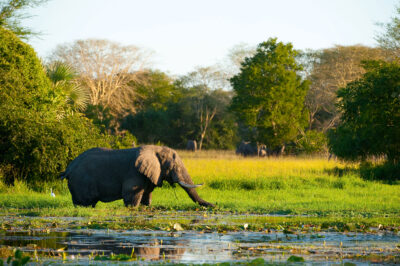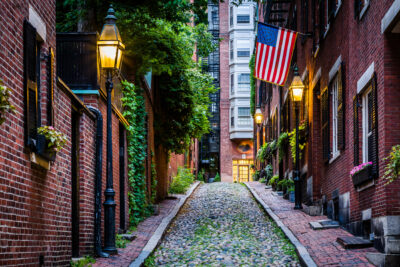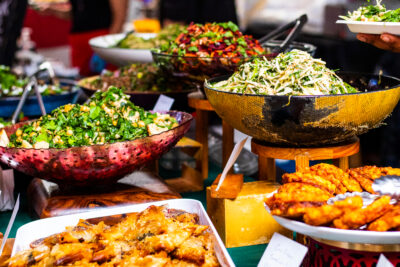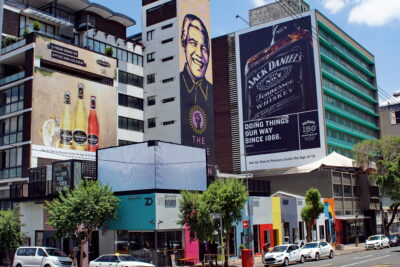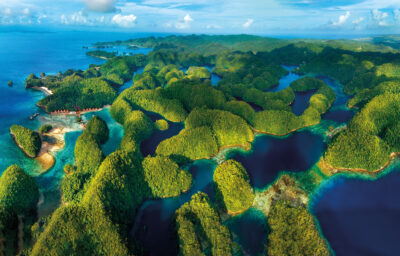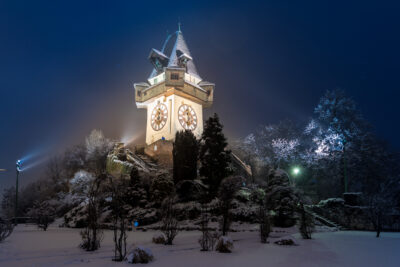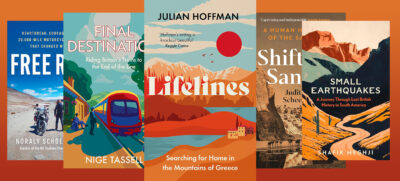In spite of everything I’d been told, I was completely unprepared for the spectacle before me. Fifty proud Kazak men on horseback, in full traditional regalia, rode slowly past me in stately splendour, yet I hardly noticed them. For on each heavily gloved arm, resting on an ornate wooden support, the riders carried a magnificent golden eagle. My eyes were transfixed by the birds. Every eagle that passed shot me a spine-shivering stare, making me feel how their victims must do; mesmerised with fear.
It was October and I was in western Mongolia, in the province of Bayan-Ölgii, for the opening ceremony of the second annual eagle festival. Hunters come from a distance of four days’ ride for the chance to win a trophy and enjoy the prestige and glory which victory brings.
Isolated from the rest of Mongolia by the daunting Altai Mountains, ancient Kazak traditions here remain virtually untouched. For hundreds, perhaps thousands of years, Kazaks have used eagles to hunt wild animals for their fur. The winter months are the best time for hunting, as this is when fur is at its thickest.
Then, a prime hunting eagle (larger females, which can reach a weight of 8kg) will regularly catch foxes, hares and even adult wolves. Removed from the nest as fledglings (eyasses) the birds are revered and doted on by their owners. Apart from giving personal satisfaction, being a proficient eagle trainer also greatly elevates social status, as the practice is highly venerated by each community. But with the pressures of the encroaching western world, and modern synthetics gradually replacing fur, it had been feared that this custom would fade, and the eagle would be considered a threat to livestock and shot.
With this in mind, Jalsa Urubshurow, Mongolian president of Nomadic Expeditions (together with Altai-Tours), in a philanthropic gesture, founded and now co-sponsors the Berkut (eagle) Association. Still only in its second year, the festival is relatively free from foreign tourists, although it is bound to attract interest in the future. To this end it’s been decided that all proceeds should go back to the association.
The event itself was spread over three days and was a kaleidoscope of colour, suffused with a rich blend of tradition and warm hospitality. I wandered at will, interacting with the crowds and visiting the hunters in the few gers (felt tents) erected for the tournament. Hooded eagles, some with false ruby eyes sewn onto their hoods, were tethered all over the place, attracting comments from members of the community.
The strongholds of the eagle trainer populations are now fragmented, so coming together for the festival they eagerly swapped stories, finding solutions to their problems and learning from each other’s mistakes. The atmosphere was vibrant as the aims of the event were unconsciously realised.
Experts in handling their charges, Mongolian eagle hunters have been deemed by western falconers as masters of the craft. Each hood is so well fitting that no straps are necessary. No bells are used (as in the west) to follow errant birds, instead, Mongolian eagles are taught to call in response to their owners. Care and devotion go into making the jesses (leg straps) and the eagles even have ‘gloves’ which are used in cold weather.
Eagle owl feathers are often tied to the wing coverts to give power to the eagle (it is believed that an eagle owl can kill a golden eagle). In addition, in the way of true conservationists, ten-year-old birds are successfully ‘hacked’ back to the wild to breed (on release, the owner ties a marker to a wing to be able to later identify the bird).
An overall winner had to be found at the event and the Kazak judges deliberated hard over the presentation of the contestants. Not only were they judged on the intricacies of their hunting equipment, but also on the clothing itself and how closely it followed tradition.
Kazak women, well-known for their exceptional skills in embroidery and appliqué, ensured that their husbands were well turned out. Horsemanship was also a major consideration and equestrian games, including two riders tugging for possession of a goat skin, spilled jubilantly into the buoyant crowd.
Mostly, however, the competition was about the eagle. In a ferocious display of predatory power, the eagles flew from the highest hilltop and swooped down upon lures being dragged along the ground, in a flurry of dust. They were judged for the directness of the flight, the power of the attack, and the amount of time taken from the moment of release.
Repeatedly the eagles upheld the honour of their trainers and only an expert eye was able to judge one strike better than another. Apart from one young bird’s comical landing on a red crash helmet (while the owner was wearing it), the trials were exemplary. Eventually a winner was singled out. He accepted his award and cash prize proudly. The remaining competitors dispersed with quiet humility to all points of the compass.
The winner, as was expected, would take several days to reach home, visiting one ger after another on his horse-borne lap of honour. It had been a privilege to witness such an important event.








